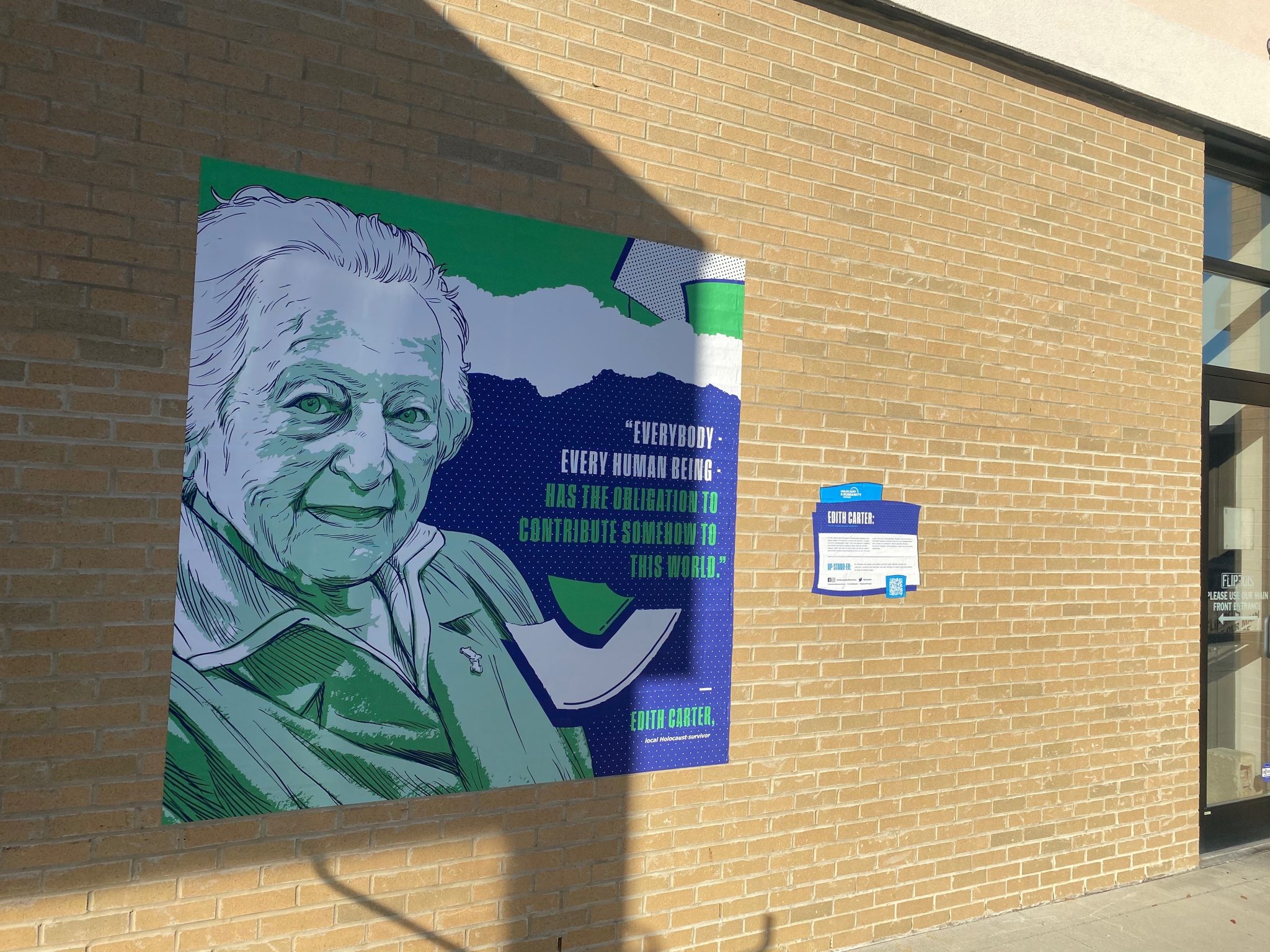Through generous funding from the Carol Ann and Ralph V. Haile, Jr./U.S. Bank Foundation and creative support from the AGAR agency, the CINCY #UPSTANDERPROJECT aims to inspire our community to become upstanders through a city-wide art campaign, monthly programs, museum tours, giveaways, and training opportunities.
From West Chester to Over-the-Rhine, you’ll find compelling, interactive designs that help you understand what it means to be an upstander. Take your photo in front of one of the murals, and tell us why you’re a #cincyupstander, and we’ll enter to you to win giveaways from the museum and community partners.
Holocaust survivor Edith Carter is featured in the Holocaust Gallery in Union Terminal, and her well-known quote is prominently displayed at the exit of the museum. You can find her mural in West Chester, and you can learn more about her story when you visit the museum.

What to Know About Edith Carter
Edith Carter (nee Knopflmacher) was born in a small town in Deutschhause, Czechoslovakia on December 17, 1914. Edith and her family, the only Jews in the town, had not experienced any issues with antisemitism until the rise of Nazism. Edith’s parents, Otto and Olga, decided to move the family to the town of Olmutz, which had a larger Jewish community. While in Olmutz, Edith met a young man named Ernst Karter, whom she married in 1937. After the Munich Pact of 1938, which ceded the Sudentenland to Germany, tensions and acts of antisemitism rose in Czechoslovakia. Edith and Ernst wanted to leave, but were unable to because of the German occupation of the remainder of Czechoslovavkia in March 1939. Edith and Ernst were deported to Theresienstadt (Terezin) in 1942. On May 15, Edith and Ernst were deported to Auschwitz-Birkenau as part of the plan to fool the Red Cross. After being tattooed as prisoner A-3908, Edith was assigned to hard labor moving bricks. She never gave up hope that somehow she and Ernst would survive and be reunited. The last time Edith saw her husband was on July 1 when he was selected with 1,000 other men for a labor detail. Edith remained in Auschwitz until she was sent to two other camps including Stutthof and Koch.
WATCH: ORAL HISTORY INTERVIEW WITH EDITH CARTER

In January 1945, Edith and other prisoners were forced to evacuate the camp on a death march because of the advancing Soviet Army. The snow was so bad, the women were forced into a barn where they were guarded for six weeks with very little warmth or food. Forced to march again, Edith and five other women managed to escape and hide in a ditch. A farmhand found them, housed them in a pigsty, and brought them food. When the Russians arrived to the area, Edith and her friends were finally free. After the war, Edith was cared for by Polish Catholic nuns for several weeks before being sent to a repatriation camp. Making her way back to Olmutz, Edith hoped to be reunited with her family and husband, but was soon told none had survived. In 1948, she left Czechoslovakia and came to Cincinnati, where she married Gustav Carter, Ernst’s cousin. Gustav had lost his wife during the war, but his two daughters, Janine and Ruth, had survived. Together they became a family and in 1951, Edith and Gustav had a daughter, Deborah. Edith died in 2010 at the age of 96.
ABOUT THE CINCY UPSTANDER PROJECT
Through generous funding from the Carol Ann and Ralph V. Haile, Jr./U.S. Bank Foundation and creative support from the AGAR agency, the CINCY #UPSTANDERPROJECT aims to inspire our community to become upstanders through a city-wide art campaign, monthly programs, museum tours, giveaways, and training opportunities.
